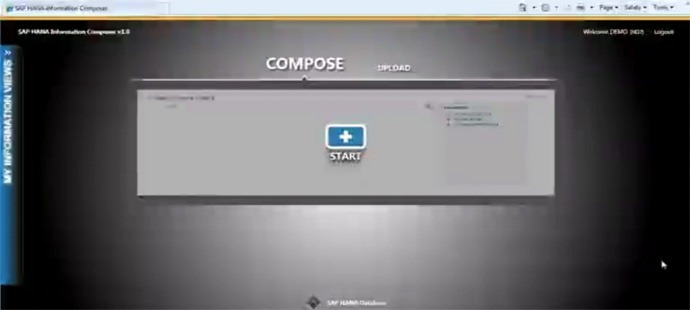
I started my career talking about self-service BI, with a product called “Skipper SQL” that let business people flexibly access information using the “objects” of their business: – sales, revenue, products, customer, etc. (you can probably guess what the product name changed to). For the first time, you didn’t need to be a computer expert to access data.
But on the back end, it has always been the job of an expert to actually gather the data and put it in a format that people could use to access the data (data mart, data warehouse, OLAP cube…). In large part, this has been because of the complexity of creating a data warehouse that is robust enough to provide fast, convenient access.
But newer in-memory architectures like SAP HANA are eliminating a lot of the need for redundant layers, and making it easy to analyze detailed, on-optimized data sets. This, in turn, makes it easier to allow business people and departments to gather their own data, upload it, and combine/compare it with corporate sources.
Some of these solutions are separate, add-on solutions to the central corporate environment (such as Excel or PowerPivot). These meet the basic business need, but create new problems in the form of new data silos that have to be managed and secured. These types of solutions have resulted in business-led “rogue” BI implementations, created when central BI is too slow to provide more central solutions. These are the BI equivalent of fast-food: we know it’s bad for us in the long term, but they are at least better than going hungry.
The better solution would be a “balanced diet” — to provide a centralized, corporate environment that not only provides trusted, secure corporate data, but also provides “sandboxes” or “user areas” that let business people upload and manage their own data on the same system. This has been a recurring theme in my “BI of the future” presentations over the years, and it’s not a new idea, as Mark Madsen pointed out in a recent TDWI video. He talks about about the origins of data warehousing as envisaged by Barry Devlin and others, and pointed out that this type of personal store was very much part of that original vision.
The next version of SAP HANA (SP3) delivers a first version of “self-service data warehousing”. It includes a new web-based application called “Information Composer” that lets business people clean, upload, and model their own data, and combine it with trusted corporate sources. There hasn’t yet been a lot of communication about the product, but there’s a fifteen-minute walkthrough video available on the Experience SAP HANA website and you can read the Information Composer documentation.
Because the underlying platform is HANA, data access is already available through the full range of SAP BusinessObjects products. Information Composer is a great opportunity for organizations to regain control over BI installations, allowing the optimal combination of central administration and low total costs of ownership without having to sacrifice the flexibility required by business people.
Here are a few examples screenshots from the video. Cleansing data:

Finding suitable corporate data:

Choosing how to combine different sources

Adding new calculated fields


Comments
One response to “Self-Service Data Warehousing for Business People with SAP Information Composer”
[…] trees, to analyze the most critical factors that influence customer purchase decisions. A new information composer tool for SAP HANA enables business users to upload data simply into SAP HANA using a spreadsheet or by cutting and […]